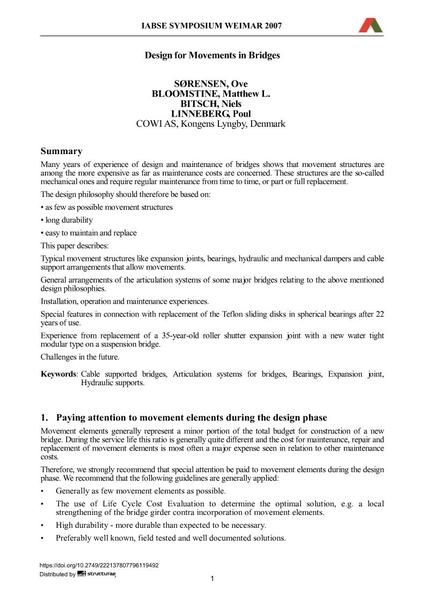Design for movements in bridges

|
|
|||||||||||
Bibliographic Details
| Author(s): |
Ove Sørensen
Matthew L. Bloomstine Niels Bitsch Poul Linneberg |
||||
|---|---|---|---|---|---|
| Medium: | conference paper | ||||
| Language(s): | English | ||||
| Conference: | IABSE Symposium: Improving Infrastructure Worldwide, Weimar, Germany, 19-21 September 2007 | ||||
| Published in: | IABSE Symposium Weimar 2007 | ||||
|
|||||
| Page(s): | 24-27 | ||||
| Total no. of pages: | 14 | ||||
| Year: | 2007 | ||||
| DOI: | 10.2749/222137807796119492 | ||||
| Abstract: |
Many years of experience of design and maintenance of bridges shows that movement structures are among the more expensive as far as maintenance costs are concerned. These structures are the so-called mechanical ones and require regular maintenance from time to time, or part or full replacement. The design philosophy should therefore be based on:
This paper describes: Typical movement structures like expansion joints, bearings, hydraulic and mechanical dampers and cable support arrangements that allow movements. General arrangements of the articulation systems of some major bridges relating to the above mentioned design philosophies. Installation, operation and maintenance experiences. Special features in connection with replacement of the Teflon sliding disks in spherical bearings after 22 years of use. Experience from replacement of a 35-year-old roller shutter expansion joint with a new water tight modular type on a suspension bridge. Challenges in the future. |
||||
| Keywords: |
Bearings expansion joint cable-supported bridges articulation systems for bridges hydraulic supports
|
||||
